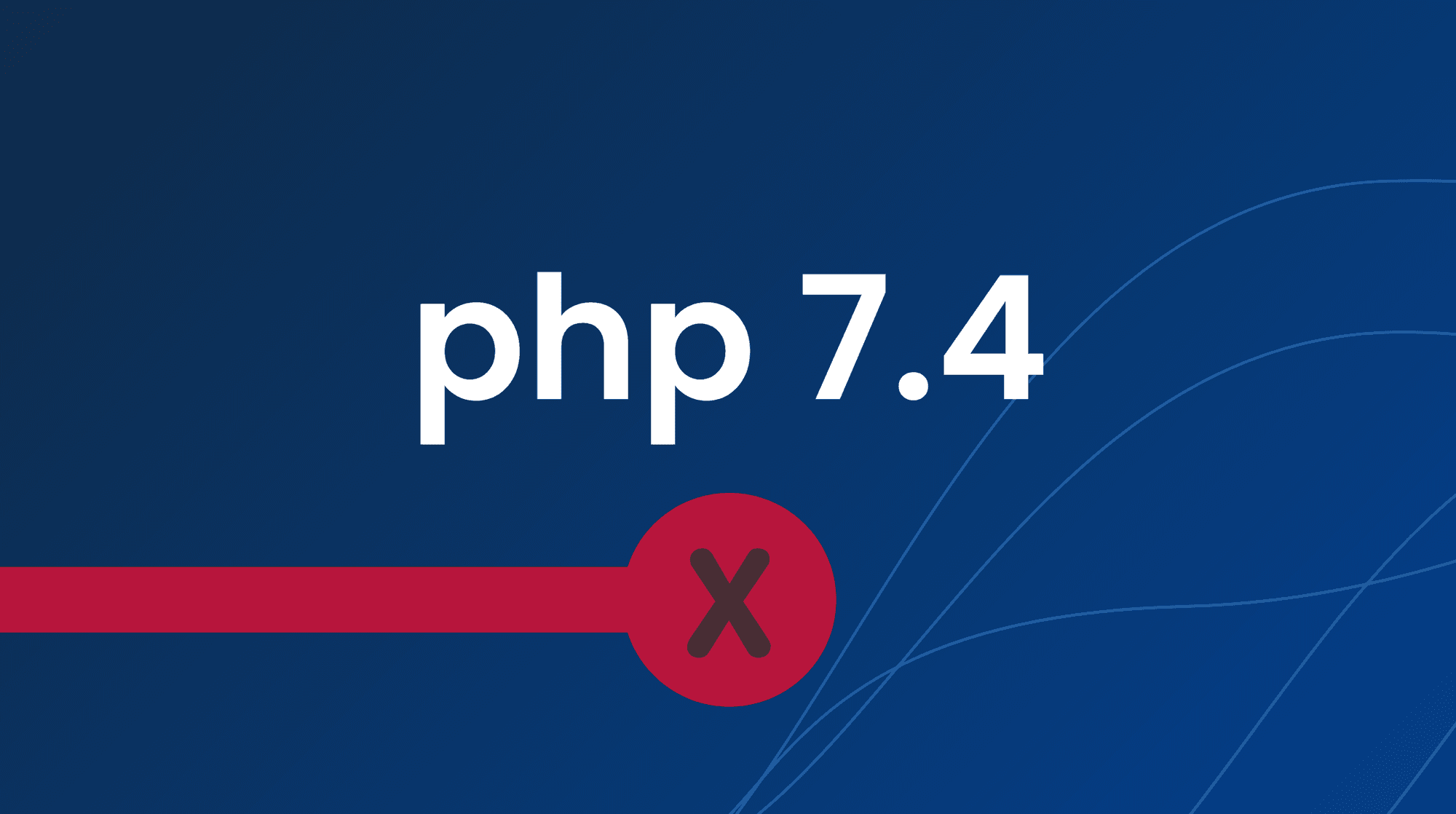Imagine visiting a website that hasn’t been updated in years. The design looks outdated, the content is irrelevant, and the functionality is glitchy. Would you trust this website? Probably not. In today’s fast-paced digital world, regularly updating your website is crucial to keep up with trends, provide a great user experience, and maintain your online presence.
But where do you begin? This practical guide will walk you through the process of managing website updates, covering everything from patch management to content updates, and everything in between. Whether you’re a business owner or a web developer, this guide will help you ensure that your website is always running at its best.
So, let’s dive in and discover the key strategies for effective website management!💻🚀👨💻
Patch Management: Ensuring Optimal System Performance
In today’s rapidly evolving digital landscape, ensuring the optimal performance of your systems is crucial for the smooth operation of your organization. One essential aspect of maintaining system performance is patch management. So, what exactly is patch management and why is it so important? Let’s dive in and explore.
Definition of Patch Management
Patch management is the process of controlling the deployment of software and operating system updates to devices within an organization. These updates, or patches, are released by software vendors to address security vulnerabilities, fix bugs, and enhance performance. Patch management involves identifying, downloading, testing, and installing patches across all devices in a timely manner to ensure the systems are up to date and protected.
Effective patch management helps protect against vulnerabilities and ensures optimal system performance. It is like maintaining a strong and sturdy shield around your systems, protecting them from potential breaches and malicious attacks.
Importance of Patch Management
Patch management is the key to maintaining a secure and high-performing IT infrastructure. Here’s why patch management should be a top priority for every organization:
- Security against vulnerabilities: Vulnerabilities in software and operating systems are a common entry point for cybercriminals. Patch management helps you stay one step ahead by addressing these vulnerabilities before they can be exploited. Regularly applying patches ensures that your systems are fortified against known security risks.
- Protection of sensitive data: In today’s world, data is highly valuable and protecting it from unauthorized access is paramount. Patch management is essential for securing your sensitive data. By addressing vulnerabilities and applying patches promptly, you significantly reduce the risk of data breaches and safeguard your organization’s reputation.
- Improved system performance: Patches not only address security issues but also optimize system performance. They often include bug fixes and performance enhancements that can improve the stability and efficiency of your software and operating systems. By keeping your systems up to date, you ensure that they are running smoothly and efficiently.
Dealing with Vulnerabilities
Vulnerabilities are an unfortunate reality in the software world. However, with effective patch management in place, you can minimize the impact of these vulnerabilities. Here’s a step-by-step approach to dealing with vulnerabilities:
- Stay informed: Keep yourself updated with the latest security advisory alerts from software vendors and industry resources. This will help you stay informed about potential vulnerabilities and the corresponding patches.
- Assess the risk: Once you receive information about a vulnerability, assess the risk it poses to your systems. Understand the potential impact it can have on your organization and prioritize accordingly.
- Test patches: Before deploying any patch into your live environment, it’s essential to conduct thorough testing. This helps ensure that the patch will not cause any compatibility issues or disruptions to your existing systems.
- Deploy patches: Once the patches have been tested and verified, deploy them across your systems in a controlled manner. This can be done either manually or through automated patch management tools.
Remember, patch management should be an ongoing practice. Regularly monitor for new patches, assess their significance, and apply them promptly to keep your systems secure and performing optimally.
In conclusion, patch management plays a critical role in maintaining the security and performance of your systems. By addressing vulnerabilities through the timely deployment of patches, you can safeguard your organization’s sensitive data, protect against potential breaches, and ensure that your systems continue to run smoothly. So, don’t overlook the importance of patch management – it is a vital component of your overall cybersecurity strategy.
🔐 Protect your systems and keep them performing at their best – learn more about fortifying your website’s defenses with WP-Firewall here.
Change Control: Implementing Website Updates
Change control is a crucial process for any website owner or manager. It ensures that updates, both technical and otherwise, are implemented smoothly and without causing disruptions to the website’s functionality. By following proper change control procedures, website owners can minimize downtime, reduce the risk of errors, and maintain a seamless user experience.
Change Control Overview
Implementing changes to a website requires careful planning, coordination, and execution. Here’s a breakdown of the key steps involved in change control:
- Documentation: The first step in change control is to thoroughly document the proposed changes. This includes clearly stating the objectives, outlining the tasks involved, and documenting any risks or potential issues.
- Testing and Quality Assurance: Before implementing any updates, it’s essential to thoroughly test them in a controlled environment. This ensures that the updates work as intended and do not introduce any bugs or compatibility issues.
- Communication and Approval: Change control involves effective communication with all relevant stakeholders, including developers, designers, and content creators. It’s crucial to establish a clear approval process to ensure that everyone is on the same page before proceeding with the updates.
- Rollback Plan: As with any change, there is always a risk of something going wrong. That’s why it’s important to have a well-defined rollback plan in place. This plan outlines the steps to be taken if the updates cause any issues, allowing for a quick recovery and minimal disruption.
Implementing Technical Updates
Technical updates are an integral part of website maintenance and improvement. They can include software updates, security patches, plugin installations, server configurations, and more. When implementing technical updates, it’s essential to follow these best practices:
- Backup: Before making any changes, always create a backup of your website. This ensures that you can easily revert to the previous version in case anything goes wrong during the update process.
- Test Environment: Whenever possible, set up a separate test environment where you can safely implement and test the updates before deploying them to the live site. This helps identify any potential issues and allows for thorough testing without impacting the user experience.
- Scheduled Downtime: For more significant updates that may require downtime, it’s crucial to inform your users in advance. Plan a maintenance window and notify your audience through various channels, such as a website banner, email newsletters, or social media announcements.
Non-disruptive Update Strategy
Minimizing disruptions during website updates is a top priority for any website owner. Here are some strategies to implement updates without negatively impacting user experience:
- Staggered Updates: Instead of implementing all updates at once, consider staggering them over a period of time. This approach reduces the risk of overwhelming the system and allows for better monitoring of any potential issues that may arise.
- Automated Updates: Utilize automated tools and services that can handle routine updates, such as security patches and plugin updates. These tools can help streamline the update process and reduce the risk of human error.
- Monitoring and Testing: Continuously monitor your website’s performance after implementing updates. This allows you to detect any issues promptly and take appropriate action to resolve them. Regularly test your website’s functionality to ensure that everything is working as expected.
Change control is a critical process that ensures the smooth implementation of website updates. By following best practices, communicating effectively, and maintaining a disciplined approach, website owners can minimize downtime, reduce the risk of errors, and provide a seamless user experience. Ensuring smooth WordPress updates is a vital aspect of change control, and you can find more information on this topic here.
Comprehensive Website Management
Website management encompasses a range of tasks that are essential for the smooth functioning and success of a website. It involves maintaining, optimizing, and enhancing various aspects such as performance, security, and functionality. Effective website management is crucial in ensuring an excellent user experience and driving traffic to your site. In this article, we will explore three key areas of website management: website performance, website security, and website functionality.
Website Performance
Website performance plays a vital role in determining how users interact with your site. A slow-loading or unresponsive website can lead to frustration and high bounce rates. On the other hand, a fast and efficient website can enhance user engagement and improve your search engine rankings. Here are some essential factors to consider when optimizing website performance:
- Page Load Time: Aim for quick page load times to prevent users from abandoning your site. Compressing images, minimizing HTTP requests, and leveraging browser caching are some techniques to improve load times.
- Mobile Responsiveness: With the majority of internet users accessing websites on mobile devices, it’s crucial to ensure your site is mobile-friendly. Implement responsive design principles and perform regular testing on various devices.
- Content Optimization: Optimize your content by using efficient coding practices, minifying CSS and JavaScript files, and utilizing a content delivery network (CDN) to reduce server load and improve performance.
Improving website performance not only enhances the user experience but also contributes to better search engine rankings. Check out this resource for more tips on effective WordPress website management.
Website Security
Maintaining a secure website is of utmost importance in today’s digital landscape. Cyber threats such as malware, hacking attempts, and data breaches are widespread, and a compromised website can have severe consequences for your business. Here are some crucial measures to ensure website security:
- Regular Backups: Create regular backups of your website to protect against data loss. Store backups in secure locations and test their restorability periodically.
- SSL Certificate: Implement a Secure Sockets Layer (SSL) certificate to encrypt data transmitted between your website and its users. This will provide an added layer of security and boost user trust.
- Strong Passwords: Enforce strict password policies for all user accounts associated with your website. Encourage the use of strong, unique passwords and facilitate regular password updates.
- Software Updates: Keep your website’s CMS, themes, and plugins up to date to mitigate security vulnerabilities. Regularly check for updates and apply them promptly.
By prioritizing website security, you can protect sensitive data, establish trust with your users, and safeguard your online reputation.
Website Functionality
Ensuring that your website is functional and user-friendly is key to providing an optimal experience for your visitors. A well-designed and intuitive website can increase user engagement and encourage conversions. Consider the following aspects to improve website functionality:
- Intuitive Navigation: Keep your website’s navigation simple and intuitive, allowing users to find the information they need effortlessly. Use clear and descriptive labels for menu items and organize your content logically.
- Responsive Design: Optimize your website’s design for different screen sizes and resolutions. This will ensure that your site looks and functions well across various devices.
- Search Functionality: Implement a search feature on your website to help users find specific content quickly. Include relevant filters and use autocomplete to enhance the search experience.
- Error Handling: Make sure your website effectively handles errors, such as 404 pages, and provides clear instructions on what action users should take next.
By focusing on website functionality, you can create a seamless user experience that keeps visitors engaged and encourages them to explore your site further.
Remember, comprehensive website management involves continuously monitoring and optimizing various aspects of your site. By prioritizing performance, security, and functionality, you can ensure your website operates smoothly and delivers a positive user experience.
Importance of Regularly Updating Website Content
In today’s digital age, having a website is crucial for any business or individual looking to establish an online presence. However, simply having a website is not enough to stay competitive in the ever-changing online landscape. Regularly updating your website content is essential to keep your site healthy, improve its SEO performance, and meet user expectations. Let’s explore these benefits in more detail.
Improving Site Health
-
Search engines like Google are constantly evolving their algorithms to provide users with the most relevant and up-to-date information. By regularly updating your website content, you signal to search engines that your site is active, relevant, and worth indexing. This can lead to better search engine rankings and increased organic traffic to your site.
-
Outdated content can give the impression that your website is neglected or no longer relevant. By regularly adding fresh and valuable content, you demonstrate that your business is active and engaged, instilling trust and credibility in your audience.
-
Additionally, updating your website content allows you to fix any errors, broken links, or outdated information that may exist on your site. Providing accurate and up-to-date information is crucial for maintaining a positive user experience and ensuring that visitors find what they are looking for on your website.
Boosting SEO Performance
-
Search engine optimization (SEO) is the process of optimizing your website to rank higher in search engine results pages. Regularly updating your website content can have a positive impact on your site’s SEO performance in several ways:
-
Freshness Factor: Search engines place a higher value on fresh and recently updated content. By consistently adding new content, you increase your chances of ranking higher in search results and attracting more organic traffic.
-
Keyword Optimization: Updating your website content gives you the opportunity to incorporate relevant keywords, improving your site’s visibility for targeted search queries.
-
Internal Linking Opportunities: Each time you add new content, you create opportunities to link internally to other relevant pages on your site. Internal linking not only helps search engines discover and index your content more effectively but also improves user navigation and engagement.
-
Social Sharing Potential: Fresh and updated content is more likely to be shared on social media platforms, generating more external links and increasing your site’s visibility and authority.
Remember, providing valuable and authoritative content is key to attracting and retaining visitors. It’s not just about updating for the sake of it; it’s about providing value to your audience.
-
Meeting User Expectations
-
User expectations are constantly evolving, and they expect websites to keep up with the latest trends and technologies. Regularly updating your website content helps you stay relevant and meet these expectations in several ways:
-
Mobile Responsiveness: With the exponential growth of mobile device usage, having a mobile-responsive website is no longer optional. Regularly updating your website’s content allows you to ensure that it is optimized for mobile devices, providing a seamless experience for your mobile users.
-
Fresh and Engaging Content: Visitors are more likely to stay and engage with your website if you regularly offer fresh and engaging content. This can include blog posts, articles, videos, infographics, or any other type of media that suits your audience’s preferences. By consistently providing valuable content, you keep your audience interested and encourage them to return to your site.
-
Website Design and User Experience: Regularly updating your website content gives you the opportunity to improve the overall design and user experience. By staying current with web design trends and best practices, you can create a visually appealing and user-friendly website that keeps visitors coming back for more.
In conclusion, regularly updating your website content is essential for improving site health, boosting SEO performance, and meeting user expectations. By staying active and relevant, you increase your chances of success in the highly competitive online landscape. So, make it a habit to review and update your website content on a regular basis to reap the benefits it can bring to your online presence.
To learn more about how to boost your website’s SEO performance, check out our comprehensive guide on Boosting SEO Performance.
Conclusion
In conclusion, managing website updates is crucial for maintaining optimal performance, security, and functionality. Incorporating patch management ensures that vulnerabilities are addressed promptly, safeguarding your website from potential threats. Implementing change control practices allows for smooth and non-disruptive updates, minimizing any downtime for your site visitors. Taking a comprehensive approach to website management encompasses monitoring performance, enhancing security measures, and ensuring seamless functionality. Regularly updating website content not only improves site health but also boosts SEO performance and meets user expectations.
Remember, keeping your website up to date is essential for delivering an exceptional user experience and staying ahead of the competition. With Managed-WP’s premium managed WordPress cloud hosting platform and expert support, you can simplify your infrastructure and enjoy the freedom to focus on your digital experiences. Take advantage of their 24/7/365 support, WordPress NOC, backup management, patch management, and proactive monitoring to ensure that your website is always running smoothly and securely.
So, don’t wait any longer. Start managing your website updates effectively with Managed-WP. Click here to learn more and get started today! 💻🚀
Frequently Asked Questions
- How often should I update my website?
It’s recommended to update your website regularly, at least once every month. However, the frequency of updates may vary depending on your website’s content, industry, and the nature of your business.
- What elements of my website should I update?
You should focus on updating various elements of your website, including content, images, plugins or extensions, themes, and security patches. It’s important to keep all these components up to date to ensure optimal performance and security.
- Why is it important to update my website?
Updating your website is crucial for several reasons: it improves performance, enhances security, ensures compatibility with the latest technologies, helps in search engine optimization (SEO), and provides a seamless user experience.
- How can I keep track of website updates?
To keep track of website updates, you can create a website maintenance log, set up automated monitoring tools, subscribe to update notifications from CMS platforms or plugins, and regularly review your website analytics to identify areas that require updates.
- What precautions should I take before updating my website?
Before updating your website, it’s crucial to backup all your files and databases, test updates on a staging environment, ensure compatibility of new updates with your current setup, and have a recovery plan in case of any unexpected issues.



















